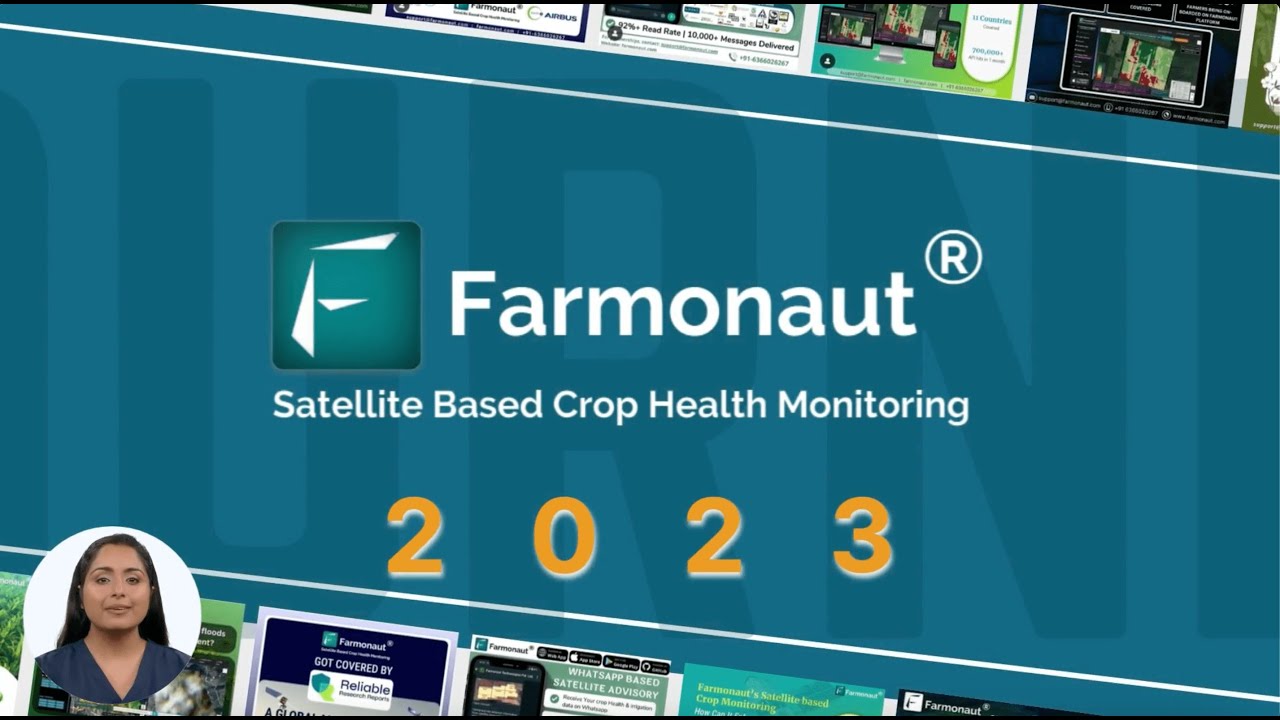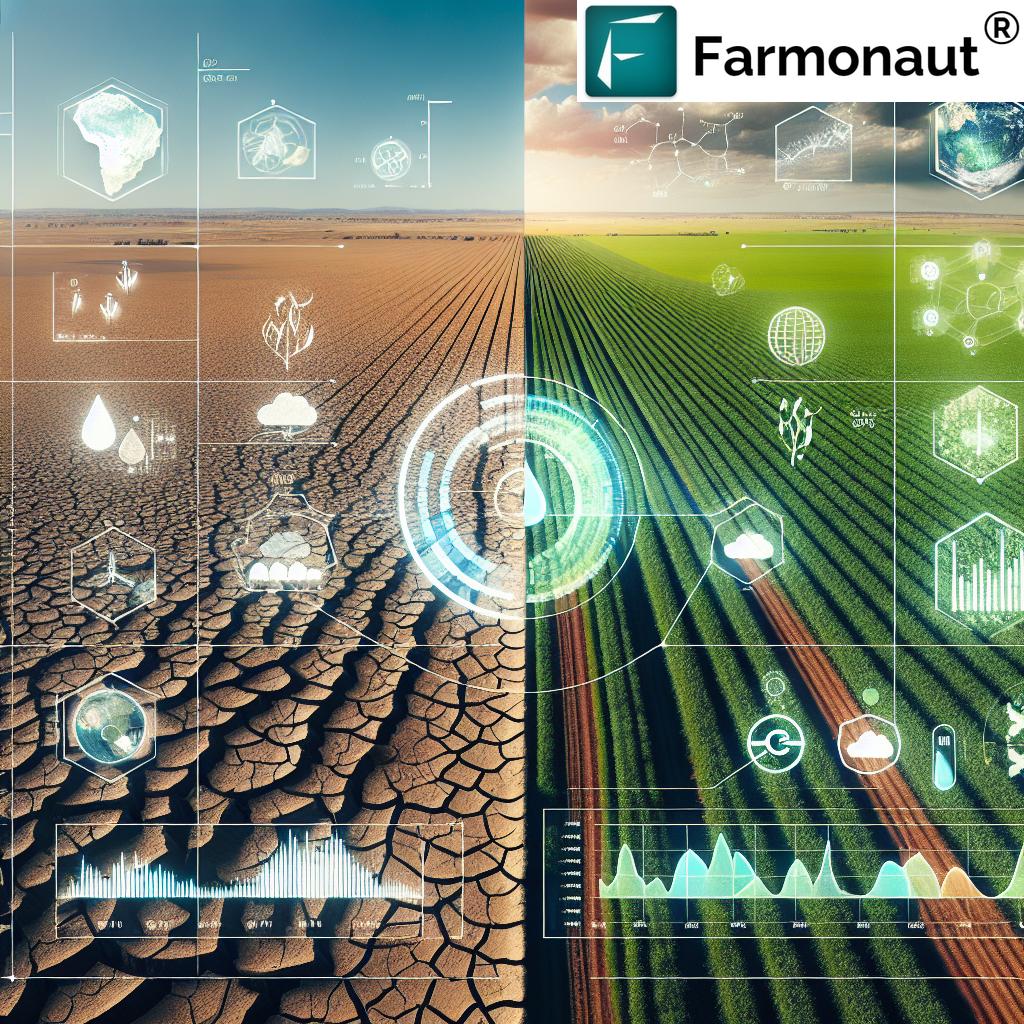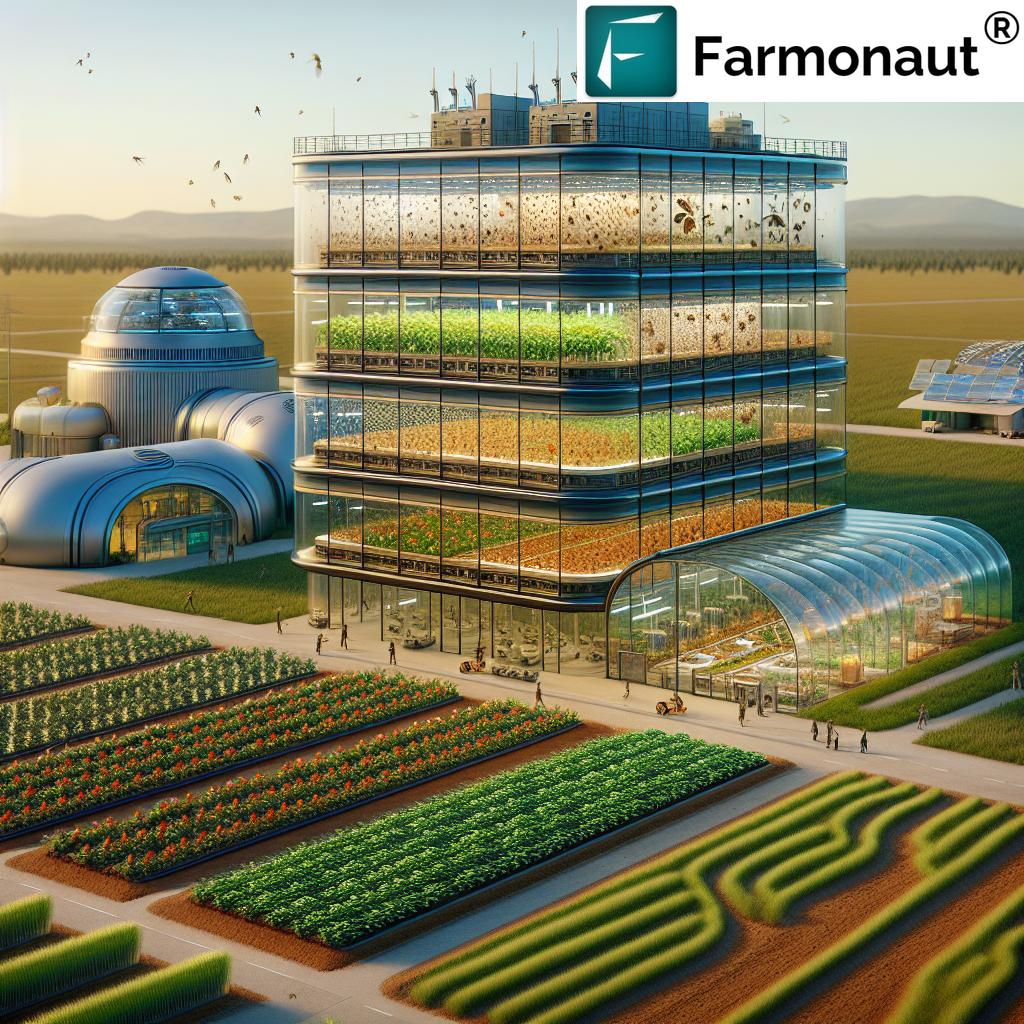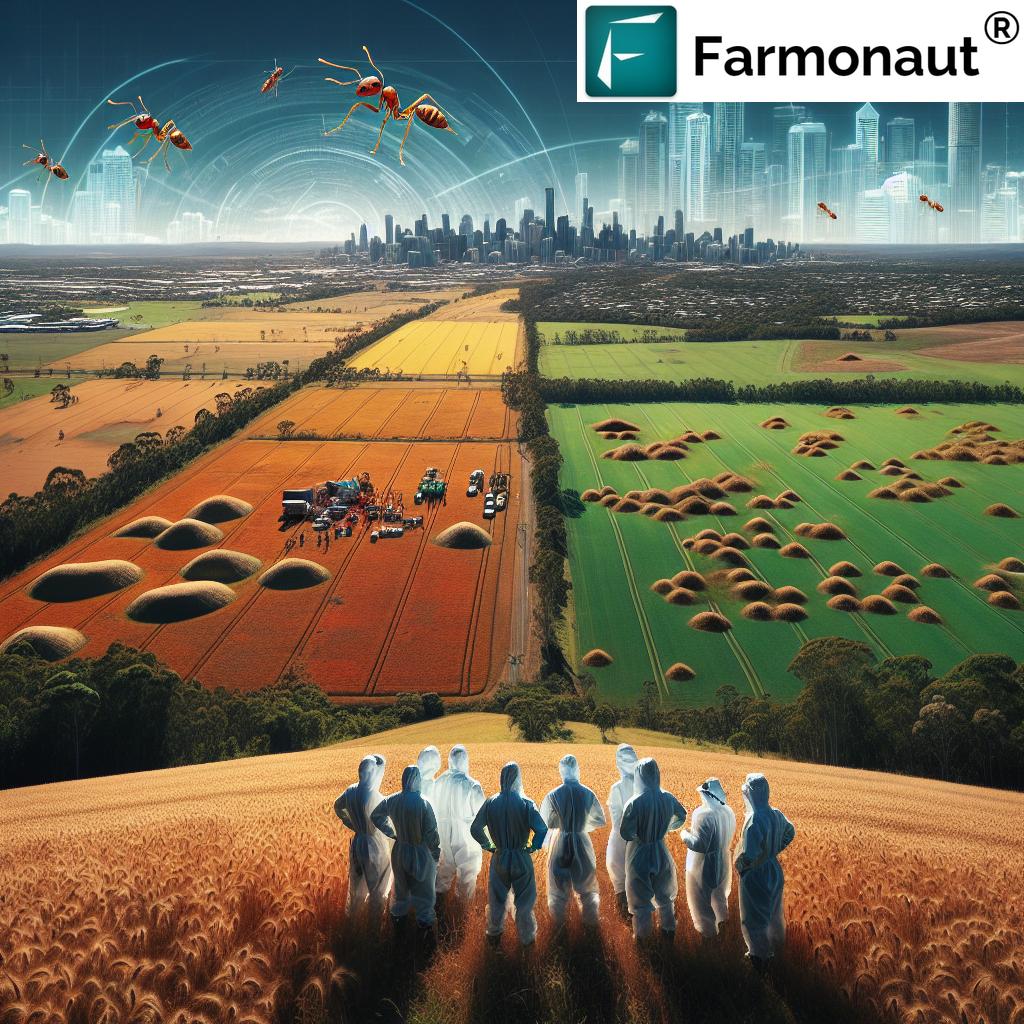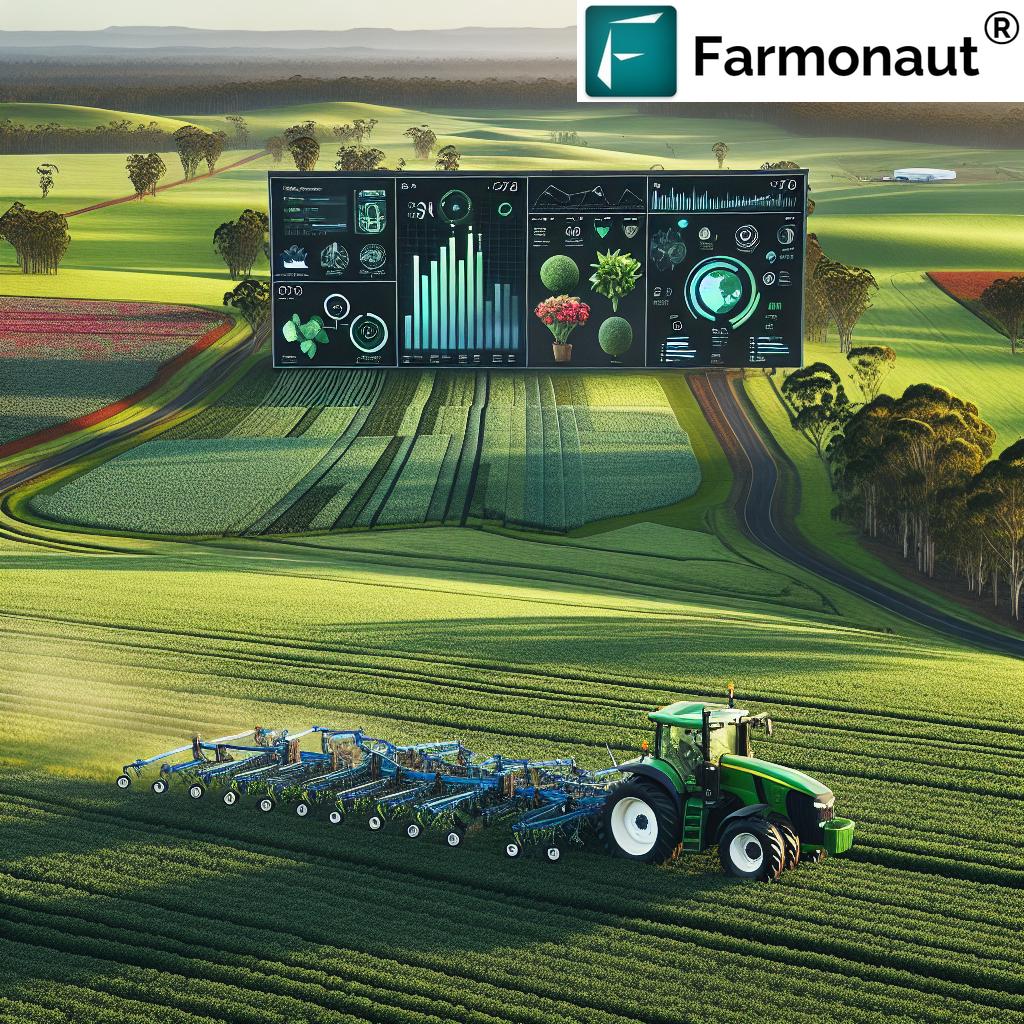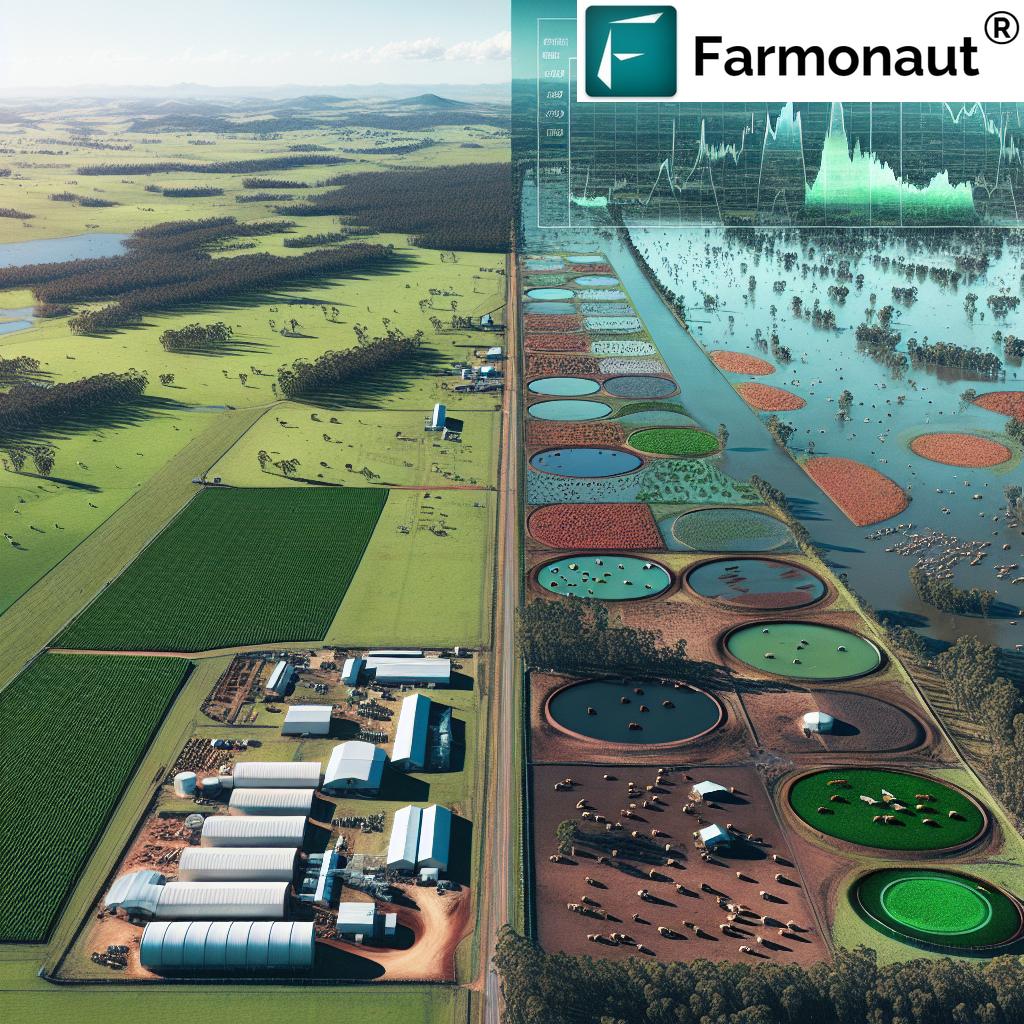Revolutionizing Australian Wool Industry: Sustainable Innovation and Governance Practices Shaping the Future
“Australian wool industry contributes approximately $3.6 billion annually to the national economy.”
Welcome to our comprehensive exploration of the transformative changes reshaping the Australian wool industry. As we delve into the world of sustainable sheep farming and cutting-edge agritech solutions, we’ll uncover how innovation is propelling this vital sector into a new era of efficiency, sustainability, and profitability.
At Farmonaut, we’re proud to be at the forefront of this agricultural revolution, offering intelligent solutions that are reimagining wool farming practices for a more sustainable future. Our advanced satellite-based farm management platform is empowering woolgrowers with data-driven insights, enabling them to make informed decisions that optimize their operations and minimize environmental impact.
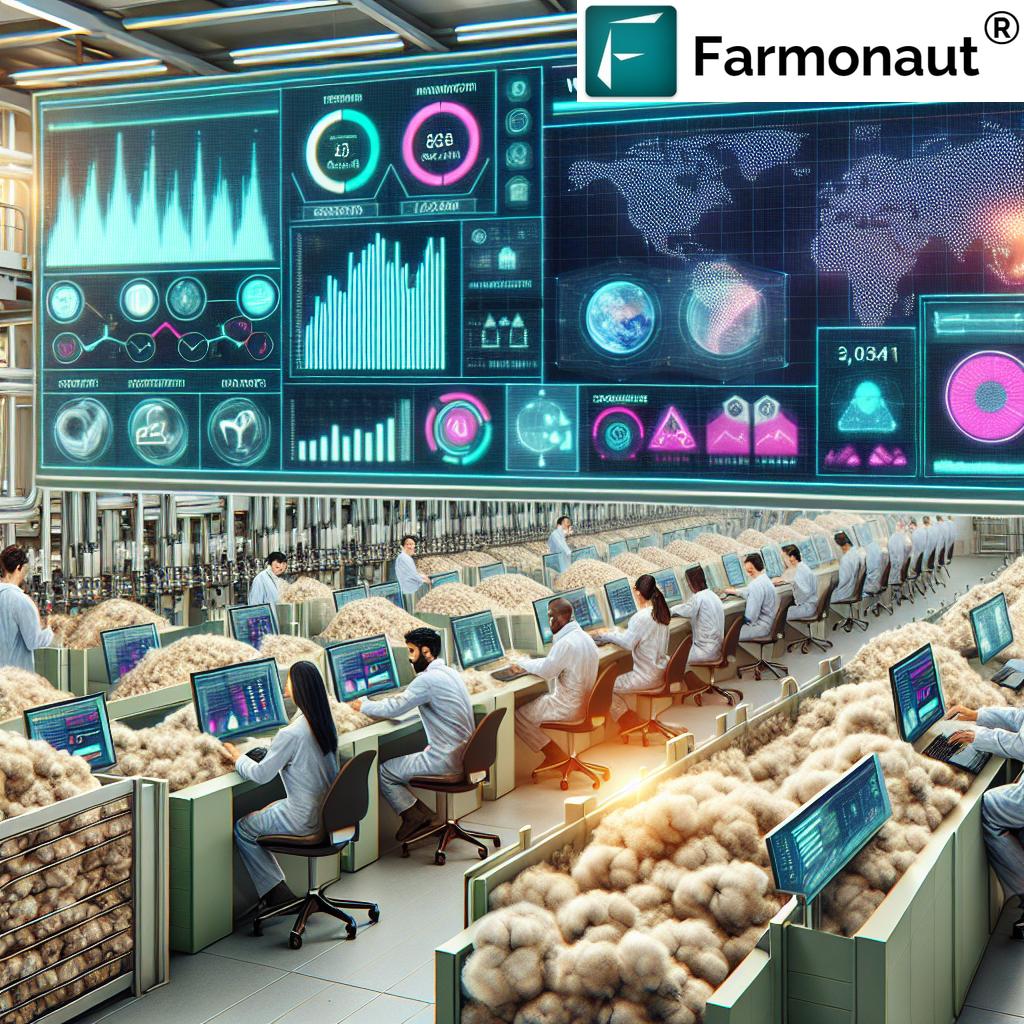
The Evolution of Wool Harvesting Technology
The Australian wool industry has come a long way from traditional shearing methods. Today, we’re witnessing a technological revolution in wool harvesting that’s transforming the efficiency and quality of wool production. Let’s explore some of the key innovations:
- Automated Shearing Systems: These systems use robotic arms and advanced sensors to shear sheep with precision, reducing stress on the animals and improving the consistency of wool cuts.
- Laser Scanning Technology: Before shearing, lasers scan the sheep’s body to create a 3D model, allowing for optimized cutting patterns and maximizing wool yield.
- Wool Classification AI: Artificial intelligence is now being employed to classify wool quickly and accurately, streamlining the grading process and ensuring fair pricing for growers.
At Farmonaut, we’re integrating these technological advancements into our platform, providing woolgrowers with real-time data on their flocks and harvesting processes. Our satellite imagery and AI-powered analytics help farmers identify the optimal times for shearing, based on wool growth rates and environmental conditions.
Merino Wool Production: A Blend of Tradition and Innovation
Merino wool, renowned for its softness and versatility, remains the cornerstone of Australia’s wool industry. However, the production of this premium fiber is undergoing significant changes to meet modern demands for sustainability and quality.
“Merino sheep account for about 80% of Australia’s wool production, making it the world’s largest fine wool producer.”
- Genetic Advancements: Breeding programs are now utilizing genomic selection to produce Merino sheep with superior wool qualities and improved disease resistance.
- Precision Nutrition: Tailored feeding regimens, informed by data-driven insights, are optimizing wool growth and quality while reducing environmental impact.
- Climate-Adaptive Farming: With changing weather patterns, farmers are adopting climate-smart practices to ensure consistent Merino wool production in varying conditions.
Farmonaut’s platform plays a crucial role in modern Merino wool production. Our satellite-based crop health monitoring system allows farmers to assess pasture quality and adjust grazing patterns accordingly, ensuring optimal nutrition for their Merino flocks.
Sustainable Sheep Farming Practices
Sustainability is no longer just a buzzword in the wool industry; it’s a necessity. Australian woolgrowers are increasingly adopting eco-friendly practices that not only benefit the environment but also improve the quality and marketability of their wool.
- Regenerative Agriculture: Many farms are implementing holistic grazing methods that improve soil health, increase biodiversity, and enhance carbon sequestration.
- Water Conservation: Advanced irrigation systems and water recycling techniques are helping farms reduce their water footprint in Australia’s often drought-prone regions.
- Renewable Energy Integration: Solar-powered shearing sheds and wind turbines are becoming common sights on progressive wool farms, reducing reliance on fossil fuels.
Farmonaut’s commitment to sustainability is reflected in our carbon footprinting feature. This tool allows woolgrowers to monitor their environmental impact in real-time, helping them make informed decisions to reduce their carbon footprint and align with global sustainability standards.
Agricultural Governance Practices Shaping the Industry
The wool industry’s governance landscape is evolving to meet the challenges of the 21st century. New policies and standards are being implemented to ensure the industry remains competitive, ethical, and sustainable.
- Traceability Initiatives: Blockchain-based systems are being adopted to provide end-to-end traceability of wool from farm to fashion, enhancing transparency and consumer trust.
- Animal Welfare Standards: Stricter regulations and voluntary codes of practice are raising the bar for sheep welfare, addressing concerns from conscious consumers.
- Industry Collaboration: Increased cooperation between growers, processors, and retailers is fostering innovation and streamlining the supply chain.
Farmonaut’s blockchain-based traceability solution is at the forefront of these governance changes. Our system ensures that every stage of wool production is recorded and verifiable, from the sheep’s diet to the final processing of the fiber.
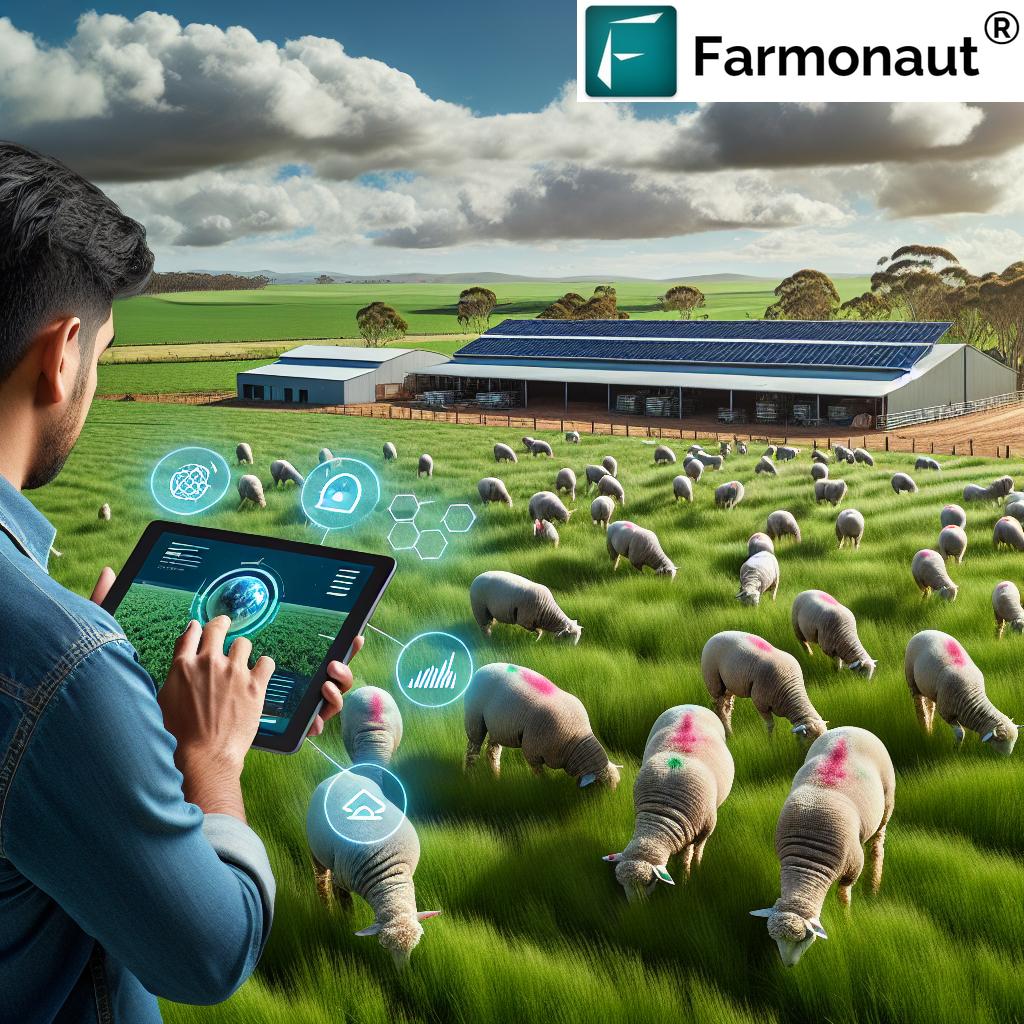
Wool Market Trends and Risk Management
The global wool market is characterized by volatility, influenced by factors ranging from fashion trends to international trade policies. To navigate this complex landscape, Australian woolgrowers are adopting sophisticated risk management strategies:
- Forward Contracts: Growers are increasingly using forward selling agreements to lock in prices and mitigate market fluctuations.
- Diversification: Many farms are exploring complementary enterprises, such as agritourism or carbon farming, to spread risk.
- Data-Driven Decision Making: Access to real-time market data and predictive analytics is empowering growers to make informed selling decisions.
Farmonaut’s platform contributes to effective risk management by providing woolgrowers with up-to-date market intelligence and predictive yield models. This information allows farmers to align their production with market demands and optimize their selling strategies.
The Role of Research and Education in Driving Industry Growth
Continuous research and education are vital for the ongoing evolution of the Australian wool industry. Investments in these areas are paying dividends in terms of innovation and sustainability:
- University Partnerships: Collaborations between wool industry bodies and academic institutions are driving cutting-edge research in areas like genetic improvement and sustainable farming practices.
- Vocational Training: Specialized programs are equipping the next generation of woolgrowers with the skills needed to manage high-tech, sustainable farming operations.
- Extension Services: Knowledge transfer initiatives are ensuring that research findings and best practices reach farmers on the ground.
At Farmonaut, we believe in the power of education. Our platform includes an AI-powered advisory system, Jeevn AI, which provides personalized recommendations and continuous learning opportunities for woolgrowers.
Shearing Shed Safety and Efficiency
The shearing shed is the heart of wool production, and innovations in this space are significantly improving both safety and efficiency:
- Ergonomic Design: Modern shearing sheds are being designed with worker comfort in mind, reducing the risk of injuries and improving productivity.
- Automated Wool Handling: Conveyor systems and robotic sorters are streamlining the wool handling process, reducing manual labor and the potential for contamination.
- Smart Lighting and Ventilation: IoT-enabled systems are creating optimal working conditions, adjusting to environmental factors in real-time.
Farmonaut’s fleet and resource management tools extend to shearing operations, helping woolgrowers optimize their workforce scheduling and equipment maintenance, ensuring peak efficiency during critical shearing periods.
Wool Processing Standards and Innovation
The journey of wool doesn’t end at the farm gate. Innovations in wool processing are adding value to the raw product and opening new market opportunities:
- Eco-Friendly Scouring: New wool cleaning processes are reducing water usage and chemical runoff, aligning with sustainability goals.
- Advanced Fiber Treatments: Nanotechnology is being applied to enhance wool’s natural properties, creating fabrics that are more durable, stain-resistant, and even self-cleaning.
- Circular Economy Initiatives: Research into wool recycling and biodegradability is positioning wool as a sustainable fiber choice in the fashion industry.
Farmonaut’s traceability solutions extend through the processing stage, allowing consumers to verify the sustainability credentials of their wool products from farm to wardrobe.
Agritech in Wool Farming: Farmonaut’s Intelligent Solutions
As we’ve seen throughout this exploration, technology is the driving force behind the transformation of the Australian wool industry. Farmonaut’s suite of agritech solutions is specifically designed to address the unique challenges and opportunities in wool farming:
- Satellite-Based Crop Health Monitoring: Our advanced imagery allows woolgrowers to assess pasture health and make informed decisions about grazing rotations and supplementary feeding.
- AI-Powered Advisory System: Jeevn AI provides personalized recommendations on flock management, shearing timing, and disease prevention based on real-time data and historical patterns.
- Blockchain Traceability: Our secure, tamper-proof system ensures the integrity of wool provenance, building trust with processors, retailers, and consumers.
- Resource Management Tools: From water usage to vehicle tracking, our platform helps woolgrowers optimize their resources and reduce operational costs.
By leveraging these technologies, Australian woolgrowers can enhance their productivity, sustainability, and market competitiveness. Farmonaut is committed to continually evolving our offerings to meet the changing needs of the industry.
The Future of Wool Industry Sustainability
As we look to the future, sustainability will continue to be the cornerstone of the Australian wool industry’s success. The integration of innovative technologies and sustainable practices is not just an environmental imperative but a business necessity:
- Carbon Neutral Wool: Many farms are working towards carbon neutrality, with some even aiming to become carbon positive through improved land management practices.
- Biodiversity Enhancement: Woolgrowers are increasingly recognizing their role as stewards of the land, implementing practices that promote native flora and fauna.
- Closed-Loop Systems: The industry is moving towards a circular economy model, where waste is minimized, and resources are used efficiently throughout the wool lifecycle.
Farmonaut’s carbon footprinting feature is instrumental in helping woolgrowers measure and reduce their environmental impact. By providing real-time data on emissions and resource usage, we’re enabling farms to set and achieve ambitious sustainability goals.
Performance Metrics and Compliance in Modern Wool Farming
In today’s data-driven agricultural landscape, performance metrics and compliance standards play a crucial role in shaping the wool industry’s future:
- Yield Optimization: Advanced analytics are helping farmers maximize their wool yield while maintaining quality standards.
- Quality Assurance: Automated systems are ensuring consistent wool grading and classification, meeting stringent industry standards.
- Compliance Tracking: Digital platforms are simplifying the process of adhering to regulatory requirements and voluntary sustainability certifications.
Farmonaut’s platform integrates these performance metrics, providing woolgrowers with a comprehensive dashboard to track their farm’s efficiency, quality output, and compliance status. This data-driven approach not only improves farm management but also enhances reporting capabilities for industry bodies and regulatory agencies.
Australian Wool Industry Innovation and Sustainability Matrix
| Aspect | Traditional Methods | Innovative Approaches | Estimated Sustainability Impact (%) | Potential Yield Increase (%) |
|---|---|---|---|---|
| Wool Harvesting Technology | Manual shearing | Automated shearing systems, laser scanning | 30% | 15% |
| Merino Wool Production | Conventional breeding | Genomic selection, precision nutrition | 25% | 20% |
| Sustainable Farming Practices | Traditional grazing | Regenerative agriculture, water conservation | 40% | 10% |
| Agricultural Governance | Paper-based records | Blockchain traceability, AI-driven compliance | 35% | 5% |
Conclusion: Weaving a Sustainable Future for Australian Wool
As we’ve explored throughout this comprehensive overview, the Australian wool industry is undergoing a remarkable transformation. From innovative wool harvesting technologies to sustainable farming practices and cutting-edge governance approaches, every aspect of wool production is being reimagined for the 21st century.
At Farmonaut, we’re proud to be at the forefront of this agricultural revolution. Our intelligent solutions are empowering woolgrowers to make data-driven decisions, optimize their operations, and meet the growing demand for sustainable, high-quality wool. By integrating satellite technology, AI, and blockchain, we’re helping to ensure that Australian wool remains a premium product in the global market while setting new standards for environmental stewardship.
The future of the Australian wool industry is bright, woven with threads of innovation, sustainability, and responsible governance. As we continue to develop and refine our agritech solutions, we remain committed to supporting woolgrowers in their journey towards a more efficient, profitable, and environmentally conscious future.
Together, we’re not just producing wool; we’re crafting a sustainable legacy for generations to come.
Frequently Asked Questions
- How is technology changing wool harvesting?
Technology is revolutionizing wool harvesting through automated shearing systems, laser scanning for optimal cutting patterns, and AI-driven wool classification, improving efficiency and reducing stress on sheep. - What are some sustainable practices in modern wool farming?
Modern sustainable practices include regenerative agriculture, water conservation techniques, renewable energy integration, and the use of data-driven farm management systems to optimize resource use. - How does Farmonaut contribute to wool industry sustainability?
Farmonaut provides satellite-based crop health monitoring, AI advisory systems, and carbon footprinting tools that help woolgrowers make informed decisions to improve sustainability and efficiency. - What role does blockchain play in the wool industry?
Blockchain technology enables end-to-end traceability in the wool supply chain, enhancing transparency, verifying sustainability claims, and building consumer trust. - How are wool processing standards evolving?
Wool processing is becoming more eco-friendly with water-saving scouring techniques, advanced fiber treatments using nanotechnology, and increased focus on circular economy initiatives like wool recycling.
For more information on how Farmonaut can revolutionize your wool farming practices, visit our website or download our app today:
For developers interested in integrating our powerful satellite and weather data into their own systems, check out our API and API Developer Docs.





